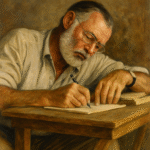National Broadcasting Day: When India Found Its Voice
It All Started with a Crackling Signal
On July 23, 1927, India heard its very first radio broadcast. It might have been just a crackle of sound back then, but it marked the start of something big—a new way for the country to connect, learn, and listen together.
This first broadcast came from Bombay, thanks to the Indian Broadcasting Company, which later became All India Radio (AIR). And just like that, a nation began to find its voice—one broadcast at a time.
Radio Was Never Just Radio
It wasn’t just about entertainment or announcements. Radio became a thread that connected people across regions, languages, and backgrounds. Suddenly, a poem read in Kolkata could reach a farmer in a far-off village. A speech in Delhi could be heard in Tamil Nadu.
It carried everything—Tagore’s verses, freedom slogans, folk songs, even cricket commentaries that brought strangers together in shared celebration (or heartbreak).
How Radio Helped Build a Nation
During the freedom struggle, radio quietly stood with the people. And when Nehru gave his famous “Tryst with Destiny” speech on August 15, 1947, it was the radio that carried those powerful words into homes across India.
In the years that followed, AIR helped shape the national identity. It wasn’t loud or flashy. It simply shared voices, ideas, music, and culture—slowly weaving together the fabric of a newly independent India.
Why It Still Matters
Even today, in a world full of screens and apps, radio hasn’t lost its touch. It still reaches people in remote places. Community radio stations now tell local stories, talk about health, farming, education—and give people a platform to speak.
So, What Are We Celebrating Today?
We’re celebrating more than just a technology. We’re celebrating a feeling—that warm, familiar voice in the background while you cook, or that old radio your grandparents never got rid of.
We’re celebrating how radio helped shape who we are as a country.
On this National Broadcasting Day, maybe pause your playlist for a moment, and think about all the stories that once traveled through static and signal—shaping a nation, one voice at a time.
Also read:
Ernest Hemingway: Bleeding onto the Page, Still Teaching Us How to Write


